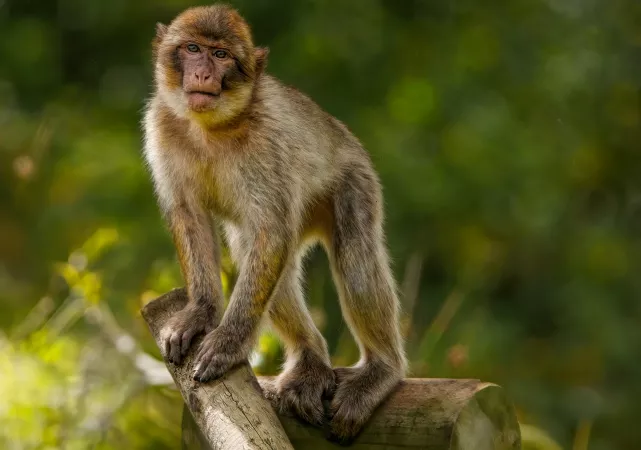Peppara Wildlife Sanctuary Travel Guide
Peppara Wildlife Sanctuary, located in the southern state of Kerala in India, is a haven for nature lovers and wildlife enthusiasts. Established in 1983, this sanctuary is spread over 53 square kilometers and is home to a variety of flora and fauna. The sanctuary is named after the Peppara Dam, which is built across the Karamana River.Top Attractions in Peppara Wildlife Sanctuary
- Guided treks through the lush green forests
- Boat rides on the serene Peppara Reservoir
- Birdwatching to spot rare species like the Malabar Grey Hornbill
- Exploring the diverse wildlife including elephants, tigers, and leopards
Peppara Wildlife Sanctuary is Famous for
Biodiversity and scenic beautyTop Attractions in Peppara Wildlife Sanctuary
- Guided treks through the lush green forests
- Boat rides on the serene Peppara Reservoir
- Birdwatching to spot rare species like the Malabar Grey Hornbill
- Exploring the diverse wildlife including elephants, tigers, and leopards
What's Great about Travelling to Peppara Wildlife Sanctuary?
- Perfect for nature lovers and wildlife enthusiasts
- Opportunity to witness diverse flora and fauna
- Peaceful and serene environment for a relaxing getaway
What's Not So Great about Travelling to Peppara Wildlife Sanctuary?
- Limited accommodation options
- Remote location might not be suitable for those seeking city amenities
- Weather can be unpredictable, so pack accordingly
Travel Tips for Peppara Wildlife Sanctuary
- Obtain necessary permits for entry into the sanctuary
- Wear comfortable clothing and sturdy shoes for outdoor activities
- Respect the wildlife and follow the guidelines provided by the authorities
Important Peppara Wildlife Sanctuary trip information
- Ideal Duration: 2-3 days to explore the sanctuary thoroughly
- Best Time to Visit: November to March for pleasant weather
- Nearby Airports and Railway Stations: The nearest airport is Trivandrum International Airport, and the nearest railway station is Thiruvananthapuram Central
FAQ's on Peppara Wildlife Sanctuary
Q1: What is the best time to visit Peppara Wildlife Sanctuary?
The best time to visit Peppara Wildlife Sanctuary is during the winter months from November to February when the weather is pleasant and ideal for wildlife viewing. This period also coincides with the peak tourist season, offering a higher chance of spotting various species in their natural habitat.
Q2: Do I need a visa to travel to Peppara Wildlife Sanctuary?
As Peppara Wildlife Sanctuary is located in India, visitors from most countries will need to obtain a tourist visa before traveling. It is advisable to check with the Indian embassy or consulate in your country for specific visa requirements and application procedures.
Q3: What are the must-visit attractions in Peppara Wildlife Sanctuary?
Some of the must-visit attractions in Peppara Wildlife Sanctuary include the diverse range of flora and fauna, the scenic Peppara Dam, the picturesque Meenmutty Waterfalls, and the various trekking trails that offer stunning views of the sanctuary's surroundings.
Q4: Is Peppara Wildlife Sanctuary a safe place to travel?
Peppara Wildlife Sanctuary is generally safe for visitors, but it is essential to follow safety guidelines provided by authorities. Avoid venturing into restricted areas, respect wildlife, and be cautious during treks or wildlife safaris. It is advisable to travel with a guide for a safe and enjoyable experience.
Q5: What is the local currency in Peppara Wildlife Sanctuary and can I use credit cards?
The local currency in Peppara Wildlife Sanctuary is the Indian Rupee (INR). While major establishments may accept credit cards, it is recommended to carry cash for smaller vendors or rural areas. ATMs are available in nearby towns for convenient access to money.
Q6: What is the local cuisine like in Peppara Wildlife Sanctuary?
The local cuisine in Peppara Wildlife Sanctuary offers a mix of traditional Kerala dishes like appam, puttu, and seafood delicacies. Visitors can savor authentic flavors at local eateries or try street food specialties. Vegetarian and non-vegetarian options are widely available, catering to different dietary preferences.
Q7: What transportation options are available in Peppara Wildlife Sanctuary?
Transportation options in Peppara Wildlife Sanctuary include public buses, taxis, and private vehicles. Tourists can also opt for guided tours or hire jeeps for wildlife safaris within the sanctuary. It is advisable to plan transportation in advance for a smooth travel experience.
Q8: Are there any cultural norms or etiquette I should be aware of when visiting Peppara Wildlife Sanctuary?
When visiting Peppara Wildlife Sanctuary, it is important to respect local customs and traditions. Dress modestly, especially when visiting religious sites or interacting with locals. Avoid public displays of affection, ask for permission before photographing people, and be mindful of wildlife conservation efforts. Embracing the local culture with an open mind will enhance your travel experience in the sanctuary.
Q9: I am a travel agent. How can I buy travel leads of Peppara Wildlife Sanctuary?
Register yourself as a travel agent at agents.tripclap.com and then you can buy travel leads to Peppara Wildlife Sanctuary once your account is approved. For more details contact our support team at +91-8069186564 or support@tripclap.com

